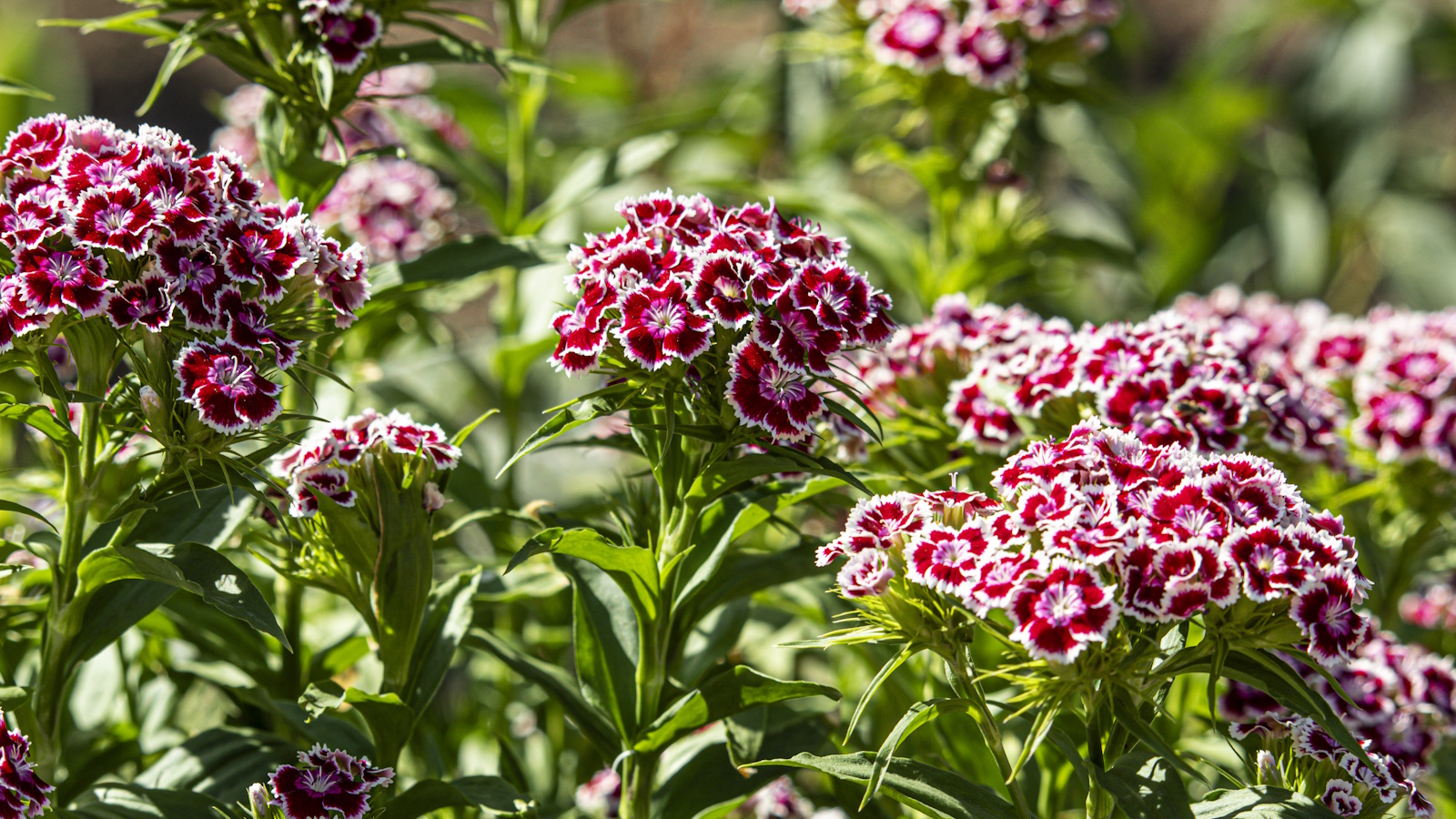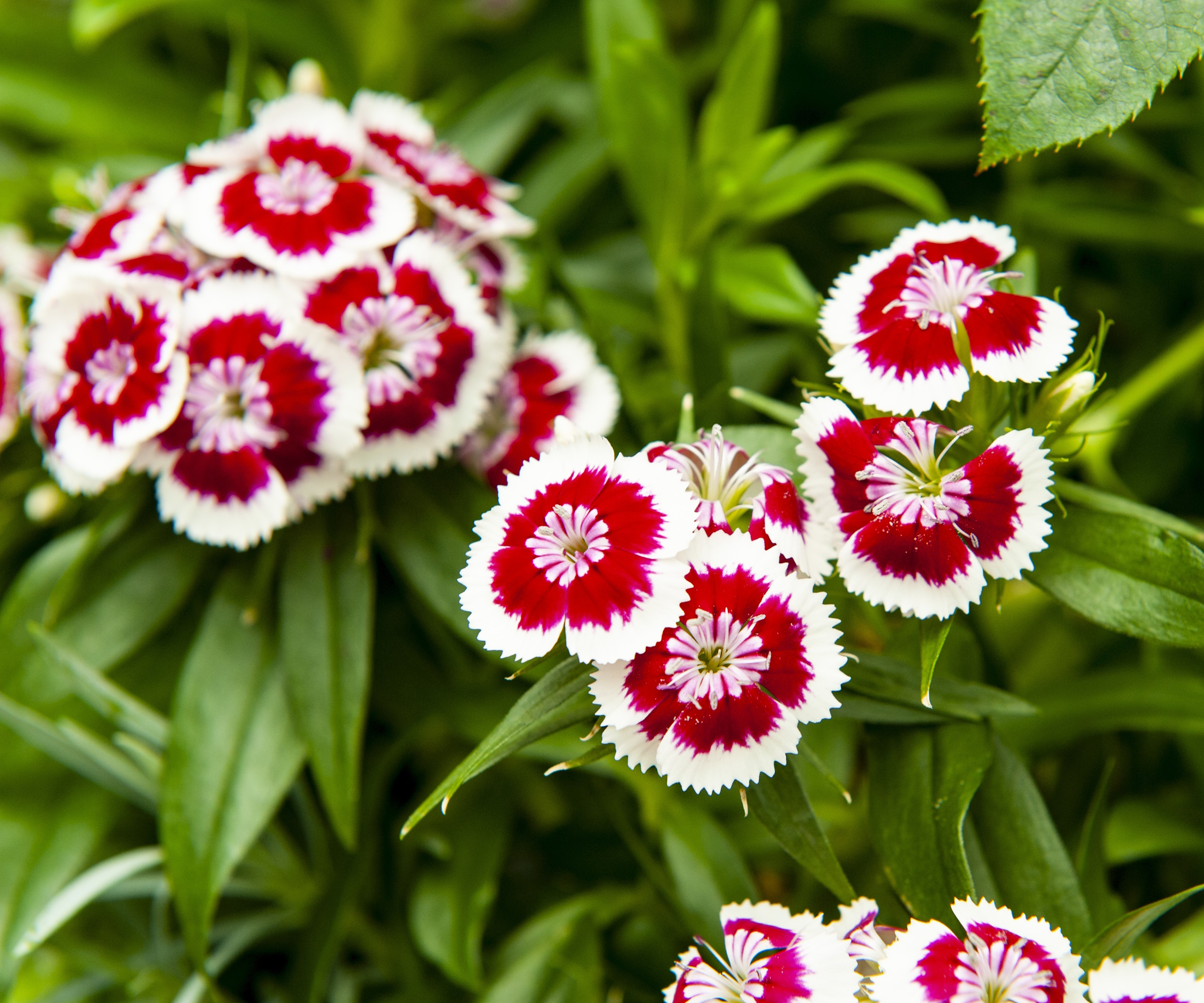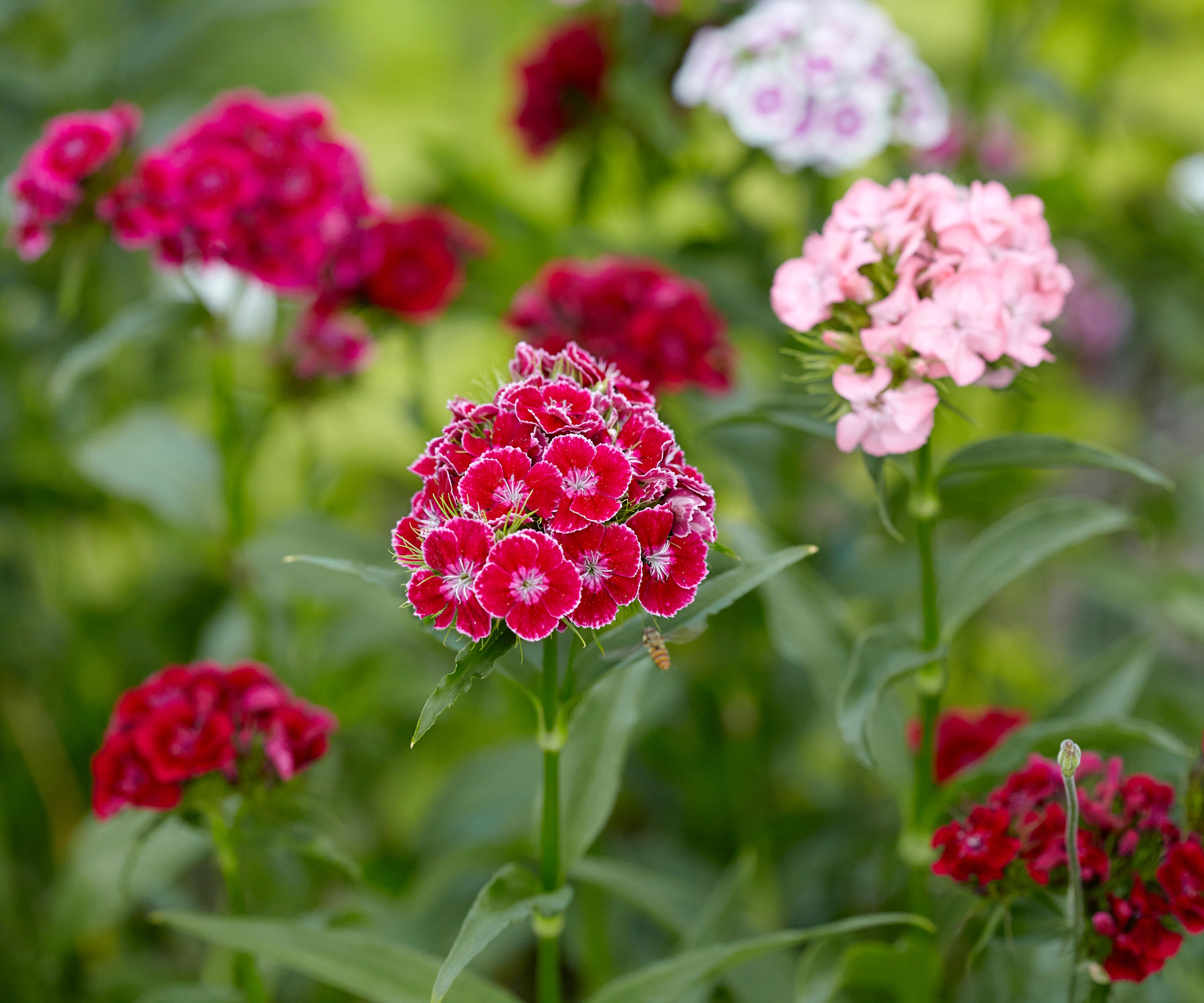
Looking for trusty perennials to give you that cottage garden-feel? Sweet William, or Dianthus barbatus, is simply a must for your plant list. These charming clusters of flowers are loved for their white and pink hues on their often patterned flowers.
Captivating the essence of a cottage garden and among the best cottage garden plants, sweet William adds sophistication to borders, pots and beds. These flowers are native to Europe and parts of Asia and grow happily across US hardiness zone 3 to zone 9. They're quite easy to grow and will bloom from spring through to fall so long as you meet some simple care requirements.
We've spoken to garden experts to find out more about growing sweet William, including when to plant it and how to keep it blooming for many months.

How to grow sweet William
Sweet William plants are the perfect flowers to soften up planting in your yard. Their charming flowers will bloom for months on end if you give them the right care. Follow our expert tips and you'll be rewarded with a beautiful display of dianthus.
When to grow sweet William

Before getting started with growing sweet William, it's important to know when the best time to grow them is - otherwise your efforts may go to waste as these plants will struggle to establish in the wrong season.
Dianthus will flower from late spring through to fall, so the best time to plant seeds is during fall or early spring.
'The best time to grow dianthus is during the cooler months of spring and fall. These seasons provide the ideal conditions for the establishment and growth of dianthus plants,' says Autumn Janus, plant expert from Perfect Plants.
You can either sow seeds outdoors or sow seeds indoors to then transplant outdoors later on, but take care not to sow them outdoors during winter where there is a risk of frost and dropping temperatures. This is a seed sowing mistake that leads to failed germination and can even kill off seedlings.
You might also consider using an indoor greenhouse to help your young sweet William plants establish by providing extra humidity and warmth.
Where to grow sweet William

Now that you know when to grow sweet William, you need identify the best location in your backyard to grow them. These plants like plenty of sunlight, but can adapt to different positions.
'Dianthus plants prefer a position that receives bright sunlight. They thrive in areas that get at least five to six hours of direct sun each day,' says Autumn.
Nevertheless, if you are working with a shade garden and struggle to get lots of sunlight in your yard, sweet William dianthus can tolerate part-shade. You might find including dianthus in your container garden helpful for moving it to a brighter spot for a few hours when the sun comes out.
'Additionally, dianthus plants prefer well-drained soil. It is important to plant them in an area that allows for good air circulation to prevent diseases and ensure healthy growth,' notes Autumn.
If sweet William plants aren't able to drain well and are left in oversaturated soil, you may notice a lack of blooms and even wilting flowers as a result of rotting roots. Opting to grow dianthus in raised beds can therefore be a good idea to help it drain better.
How to plant sweet William

Whether you have chosen to sow sweet William seeds outdoors directly or you're planting up seedlings, you should aim to plant these flowers at a depth of around 1-2mm.
'It is recommended to plant dianthus about 6 to 18 inches apart, depending on the variety, and make sure to provide proper spacing to allow for air circulation,' Autumn adds.
Sweet William creates a dazzling display when planted en-masse but it also works well as a filler among an arrangement of larger spring-flowering plants and late summer flowers.
When sowing seeds, ensure they are kept somewhere bright and you should see seedlings start to sprout after a few weeks. You should always use clean essential gardening tools when planting up new plants to avoid passing on harmful bacteria or diseases from other plants.
How to care for sweet William

Knowing how to water plants is key to keeping them happy and healthy. Too much or too little water could kill them off.
'Water the plant regularly to keep the soil moist but not waterlogged,' says Paris Lalicata, head of plant education and community at The Sill.
'If planted in the garden you can check the top few inches of soil and if it’s dry it’s time to water the plant. Be sure to give a deep, thorough soaking at the time of watering,' she adds. 'If planted in a container, water once the top few inches of soil have dried out as well.'
It's easy to monitor moisture levels with this moisture meter from Amazon.
As perennials, sweet Williams will return each year. This means it's essential to deadhead dianthus after they finish flowering in fall. 'This encourages the plant to continue shooting out blooms for the season because their goal is to create seeds so they can reproduce, so removing those blooms before they create seeds stimulates the plant to keep creating more,' says Paris.
Another way to keep sweet William blooming for longer is by fertilizing it. 'I would suggest fertilizing your plant every six to eight weeks during the active growing season in spring and early summer,' suggests Autumn. Take care not to fertilize your sweet William plants during cooler months because it could burn roots or oversaturate the soil.
Grow sweet William at home
Sow your seeds using this seed starter tray which has adjustable ventilation and a lid to help provide optimal conditions for germination.
This pack contains over 30,000 sweet William seeds so that you can grow a mixture of beautiful pink dianthus flowers.
Fertilize your plants with this slow-release fertilizer that concentrates on boosting nutrients for root growth.
FAQs
Why is my sweet William not flowering?
There are a few reasons why your sweet William may not be flowering. Firstly, these plants don't enjoy sitting in oversaturated soil and a too-wet environment could cause a lack of blooms, wilting flowers and root rot. Like most other flowering plants, sweet William also needs plenty of sunlight to encourage blooms. The best thing to do is remove any damaged or dying stems and flowers and adjust its growing environment accordingly. You may also choose to use a bloom boosting fertilizer to help encourage your sweet William to flower. It's also important to note that these plants only flower from spring to fall. Deadhead sweet William after it has finished flowering and continue providing care through fall and winter to encourage returning blooms in spring.
Can you propagate sweet William?
It's possible to propagate sweet William plants from cuttings. Take cuttings from just below a leaf node where roots will establish. You can then either place your cutting in water or propagate straight into soil. Make sure to keep your propagation warm and provide plenty of light to encourage root development. It's also possible to collect sweet William seed when the plant has finished flowering to sow and grow new plants.
Choosing to grow sweet William in your yard will reward you with a fabulous display of charming, cottage garden flowers. These are also a perfect addition to cut flower gardens and pink summer borders.







